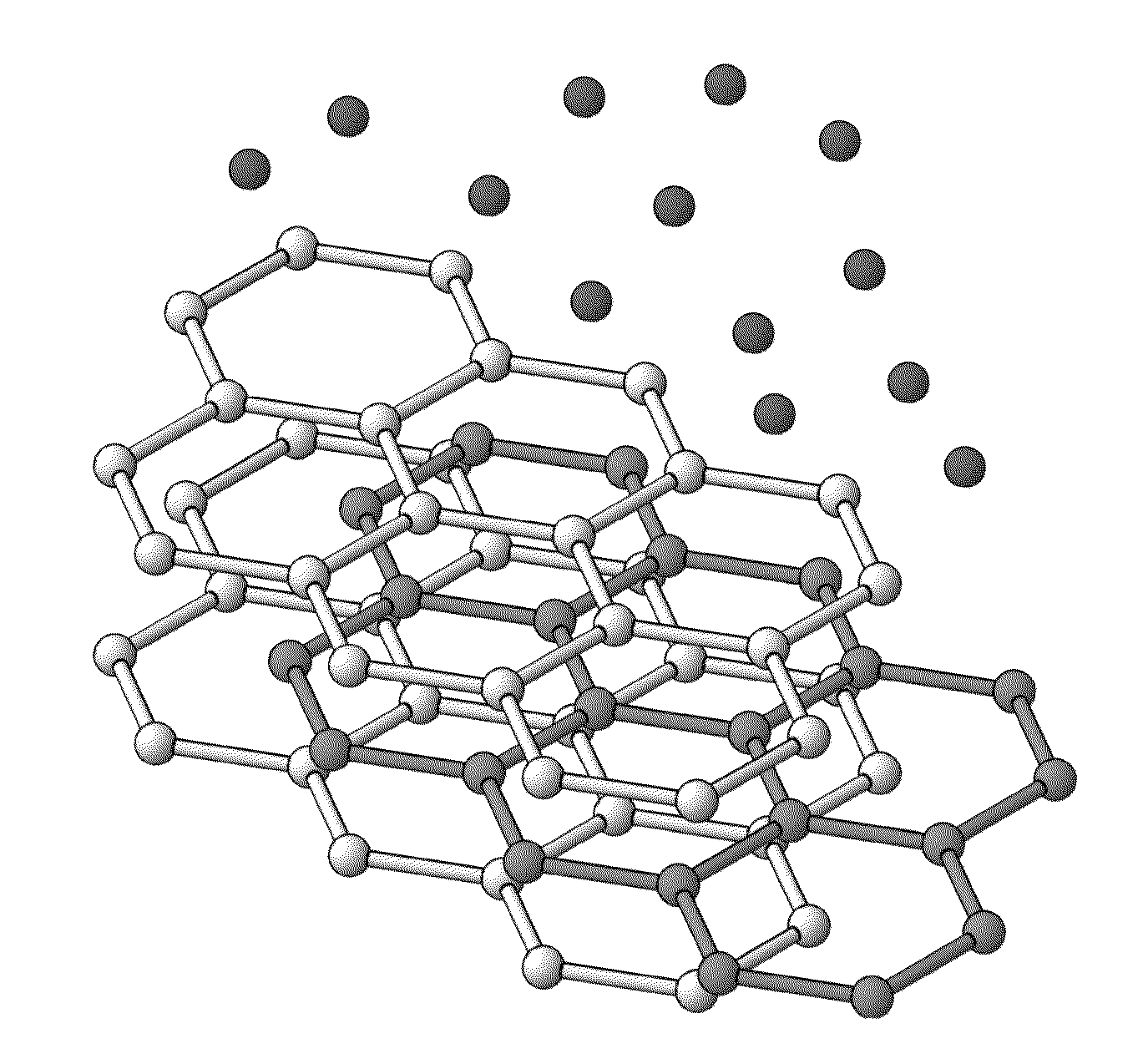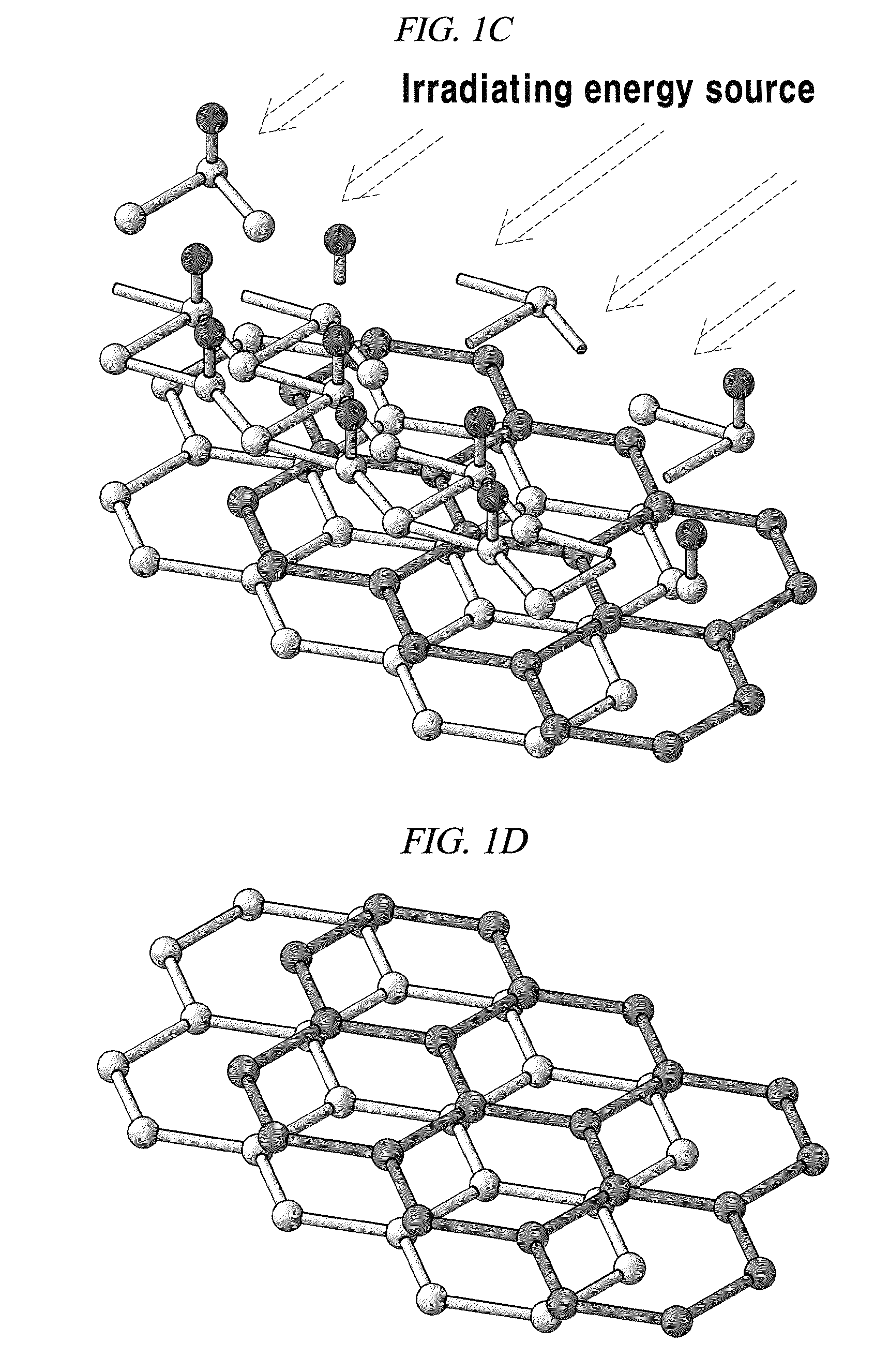Method for etching atomic layer of graphene
a graphene layer and graphene technology, applied in the field of atomic layer etching method of graphene, can solve the problems of inability to adjust and position the graphene layer, contact failure between the graphene of the channel portion and the metal of the source/drain electrode, and inability to commercialize for various purposes. , to achieve the effect of minimizing physical and electrical damage to the graphen
- Summary
- Abstract
- Description
- Claims
- Application Information
AI Technical Summary
Benefits of technology
Problems solved by technology
Method used
Image
Examples
examples
[0078]1. Method for Performing Atomic Layer Etching of Graphene and Analysis Thereof
[0079]In this example, in order to generate O2 radicals as reactive radicals to be adsorbed onto a surface of graphene, a RF power (13.56 MHz) of about 300 W was applied to an ICP plasma source. Further, the O2 radicals were designed to reach the surface of the sample by pumping flow.
[0080]Meanwhile, in order to produce an Ar neutral beam as an energy source to be irradiated to the graphene on which the reactive radicals were adsorbed, a RF power (13.56 MHz) of about 300 W was applied to the ICP plasma source. Here, the Ar neutral beam was produced by using a low angle forward reflected neutral (LAFRN) beam technique. The LAFRN beam technique is a method for extracting an Ar neutral beam by using a three grid system and a reflector after producing ICP-type plasma.
[0081]To adjust energy of the Ar neutral beam, the three grid system including a first to a third grid was utilized. Here, the first grid w...
PUM
| Property | Measurement | Unit |
|---|---|---|
| contact resistance | aaaaa | aaaaa |
| frequency | aaaaa | aaaaa |
| frequency | aaaaa | aaaaa |
Abstract
Description
Claims
Application Information
 Login to View More
Login to View More - R&D
- Intellectual Property
- Life Sciences
- Materials
- Tech Scout
- Unparalleled Data Quality
- Higher Quality Content
- 60% Fewer Hallucinations
Browse by: Latest US Patents, China's latest patents, Technical Efficacy Thesaurus, Application Domain, Technology Topic, Popular Technical Reports.
© 2025 PatSnap. All rights reserved.Legal|Privacy policy|Modern Slavery Act Transparency Statement|Sitemap|About US| Contact US: help@patsnap.com



